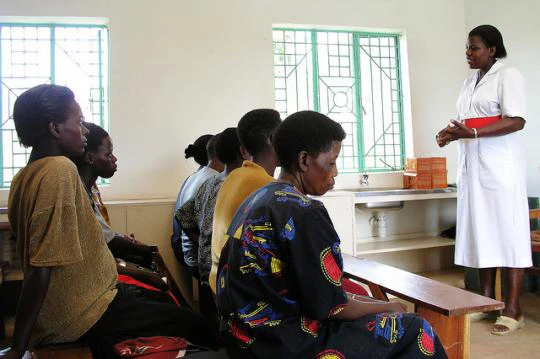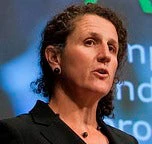“You cannot eat a sweet with the wrapping,” young men from South Africa told researchers as part of a recent World Bank study, explaining why they refuse to wear condoms despite a high and well-known risk of HIV. Men often don’t see condoms as manly, and women feel unable to insist.
What does this mean? A 2011 Gallup poll of 19 sub-Saharan African countries, home to more than two-thirds of the world's HIV-infected population, found most adults know how to prevent the spread of HIV. But while 72 percent agreed people should use latex condoms every time they have sex, only 40 percent said they ever had.
Social norms such as these—including acceptance of what the World Health Organization (WHO) describes as a global epidemic of gender-based violence—help explain why AIDS disproportionately affects women in many countries. Empowering women and challenging these norms is vital to tackling the epidemic, with broader dividends in the fight to end extreme poverty and boost shared prosperity.
Despite huge progress in treating AIDS, major challenges remain, especially on the gender front. Globally, half of all people living with HIV are women, but in Sub-Saharan Africa the figure exceeds 60 percent and young African women are three to six times more likely to be infected than their male peers. And while in most parts of the world women outlive men, AIDS has driven women’s life expectancy below that of men in Kenya, Malawi, Zambia, and Zimbabwe.
Overlapping disadvantages
In its 2013 Global Report, UNAIDS notes the multiple, overlapping disadvantages that both increase women’s risk of contracting HIV and aggravate its repercussions.
Women often face major barriers to accessing health care because their mobility is restricted and they lack control over finances. When they become caregivers to relatives with AIDS, their opportunities at school and work are diminished.
Gender-based violence further increases HIV risk. Two recent studies in Uganda and South Africa found women who had experienced intimate partner violence were 50 percent more likely to have acquired HIV than women who had not.
Further symptoms of women's and girl's lack of choice include continued high rates of early marriage, and a broad lack of autonomy that prevents them from protecting their health.
Some 38 percent of women in Sub-Saharan Africa say they’re unable to refuse sex with their husband or partner, while 70 percent of women in three countries hold that view. Half of women in the region also say they cannot ask their husband or partner to use a condom, while in Mali and Niger, more than 40 percent feel unable to refuse sex even if their husband has a sexually transmitted infection. Thirty-one percent of women in the region say refusing sex justifies wife-beating. In South Asia, 14 percent of women agree.
Child marriage sharply increases a girl’s risk of HIV infection by an older husband. One-third of girls around the world are married before they turn 18, and one in every nine girls is married before their 15th birthday. In 2010, 67 million women aged 20-24 had been married before the age of 18.
Alongside gender roles that encourage male promiscuity, this makes women vulnerable to violence and restricts their ability to discuss or negotiate sex. These are major factors driving the surge in HIV infection among women. Significantly, the newest co-sponsor of UNAIDS—which spearheads a coordinated global response to the epidemic—is UN Women.
Setting the stage for progress
Huge progress has been made since AIDS emerged in 1981. Science and social justice joined forces to slash the cost of AIDS drugs. Some 10 million people in developing countries are now on treatment as a result, able to live healthy, fulfilling lives, and new HIV infections have fallen by one-third since 2001. But many more are still living with untreated HIV, and much work lies ahead.
We now have an historic opportunity to help set the stage for transformational change—and boost momentum in the fight to end AIDS as part of more concerted efforts to tackle inequality and extreme poverty. This is true both in negotiations and consultations on the global targets that will succeed the Millennium Development Goals (MDGs) after 2015, and assessing where progress has and hasn’t occurred since the landmark International Conference on Population and Development.
At a high-level meeting here this month, UNAIDS and the World Bank Group jointly committed to address the interrelated challenges of AIDS, inequality, and extreme poverty. It’s clear that empowering women and girls will play an integral part.
Follow the World Bank Health team on Twitter: @worldbankhealth




Join the Conversation